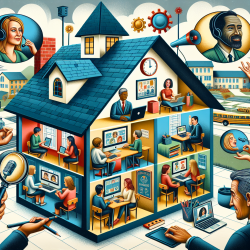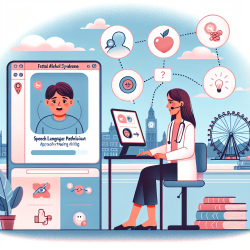In light of the COVID-19 pandemic, many behavior analysts have had to transition from traditional in-person sessions to telehealth models. This shift has posed challenges, particularly in maintaining the quality of direct observation and interaction that is crucial in Applied Behavior Analysis (ABA). Fortunately, a recent study titled "Technology to Facilitate Telehealth in Applied Behavior Analysis" provides valuable insights into how technology can support this transition effectively.
Key Technologies for Telehealth in ABA
The study reviewed three primary technologies that can facilitate telehealth for behavior analysts:
- Web Cameras: Easily accessible and cost-effective, web cameras are built into most modern devices or can be purchased as external clip-ons. They provide a basic level of interaction and observation but have limitations in terms of immersion and quality.
- Swivl: This device allows for 360-degree rotation and follows the presenter via a transmitter lanyard. It offers better mobility and audio quality compared to standard webcams, making it a good option for direct observation in various environments.
- Telepresence Robots: These robots offer a more immersive experience by allowing behavior analysts to navigate through the client's environment remotely. Although they are more expensive, they provide a higher level of interaction and are particularly useful in high-stakes or high-risk cases.
Implementing These Technologies
Each technology comes with its own set of benefits and drawbacks. Here are some practical tips for implementing them:
Web Cameras
- Choose a camera with an indicator light to signal when it's recording.
- Provide training for clients on how to operate the camera and software.
- Ensure privacy by turning off the camera at the end of each session and covering the lens when not in use.
Swivl
- Set up the Swivl in a central location for optimal 360-degree viewing.
- Decide who should wear the transmitter lanyard based on the session's goals.
- Be aware of potential connectivity issues and background noise.
Telepresence Robots
- Provide a task analysis for setting up the robot.
- Test-drive the robot to familiarize yourself with its navigation.
- Use the robot for high-need cases where a more immersive presence is beneficial.
Ethical Considerations
While implementing these technologies, it is crucial to consider ethical aspects such as informed consent, privacy, and confidentiality. Behavior analysts should select platforms compliant with HIPAA and FERPA guidelines and provide clear instructions to families about the limitations and risks associated with telehealth.
General Telehealth Tips
To ensure a smooth transition to telehealth, consider the following strategies:
- Obtain informed consent for using telehealth.
- Assess the family's comfort and familiarity with the technology.
- Provide video recorded and written instructions for setting up the technology.
- Check in with the client before starting each session to ensure it is a good time to observe.
Conclusion
The transition to telehealth in ABA has been challenging but not insurmountable. By leveraging technologies like web cameras, Swivl, and telepresence robots, behavior analysts can continue to provide effective services. For those interested in a deeper dive into the research and practical applications, the original research paper offers a comprehensive guide.To read the original research paper, please follow this link:
Technology to Facilitate Telehealth in Applied Behavior Analysis.










